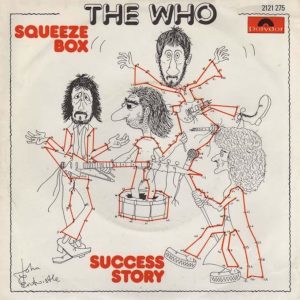Patsy Cline’s career was cruelly cut so short by her death in 1963, at just 30 years old, that most of us can only fantasize about what it would have been like to see her perform live. We’ve been examining the archives to shed a little more light on the great country star’s stage work — inspired by some comments from a uDiscover Music reader.
Our story about Patsy’s US album chart debut with Patsy Cline Showcase prompted a response from Gordon Williams, who posted a comment to say that in that very year of 1962, he was working in the “Cage” at the Mint Casino. He remembered Patsy performing at the famous nightspot in Las Vegas. “What a wonderful voice,” he enthused.
Further discussion with Gordon revealed him to be a self-described “98 years old young gentleman,” who remembered other country performers coming to Las Vegas to perform, including a show across the street from the Mint by Bob Wills and his Texas Playboys.
An enduring memory
But he was at pains to point out that his work duties at the Mint prevented him from seeing Cline’s show. “I worked the 2-10 pm shift in the Mint Casino Cage and could hear the performance,” he told us, but the memory of such a talented young singer was still with him more than half a century later.
Patsy was always cut out to be on stage. At just four years old, she won an amateur talent contest as a tap dancer, later performing in the local church choir in Virginia and in school plays. At a mere 16, it was via an audition with Wally Fowler of the Grand Ole Opry that she won his invitation to come to Nashville. That proved a false dawn, and with no record deal forthcoming, she returned home to Winchester to complete her education, performing throughout her high school years.
Once she made it big in Nashville, Cline would of course return to the town’s famous stages, where she knew how to entertain an audience, and how to relax afterwards. Fellow performer Waylon Jennings, in his 1996 autobiography Waylon, wrote that he would often see her at Tootsie’s, which was and remains one of Music City’s most famous bars. “The backroom was where the hillbillies hung out, and it was as close to an extra dressing room as the Opry had,” he remembered.
“On weekend nights it was always packed with the stars appearing at the Ryman [literally around the corner]. Hank Williams, Patsy Cline, Cowboy Copas – they all raised a glass there. Their signatures covered the walls. I wrote my name top to bottom when I had the chance. It’s still there, just like Tootsie’s.”
In May 1961, devoted Cline fan Louise Seger heard that her heroine would be performing at the Esquire Ballroom in Houston. Arriving early, she spotted Patsy sitting at a table, took her courage in both hands and went to speak to her. In Ellis Nassour’s book Honky Tonk Angel: The Intimate Story of Patsy Cline, Seger revealed what the star said to her.
‘Do you know my music?’
“I’m worried about the band,” she said. “I don’t know any of the musicians and I wonder if they know my music. Do you?” “Yes, ma’am, every beat.” “Would you do me a favor,” asked Patsy, “and, during the show, watch the drummer so he won’t rush me?”
After the concert, Seger heard Cline calling for a taxi to the Montague Hotel, and promptly invited her back to her house instead for something to eat. “At the kitchen table [they sat],” wrote Nassour, “and talked about ‘broken hearts, husband problems, children problems, loves lost, loves won…they traded stories until almost 4am.”
A typical Patsy Cline setlist from a concert at the Orpheum Theatre in Madison, Wisconsin in May 1962, shows her performing “Crazy” and “I Fall To Pieces,” among others, but also a version of “(Won’t You Come Home) Bill Bailey.” Then, in its December 28, 1962 issue, the New Musical Express ran a short news review of the Grand Ole Opry pilgrimage to Carnegie Hall in New York. Patsy was on the bill with Jim Reeves, Marty Robbins, Bill Monroe, and the Jordanaires in a show to raise money for the New York Musicians’ Aid Society.
“The trip to Carnegie Hall started out as an experiment on a giant scale,” wrote Alan Smith. “The WSM radio station wanted to prove to New Yorkers that people everywhere loved the show, and the music it presented. All the artists would donate their time and talent, and the station would pay the expense of a chartered plane, hotels, and food.
Screaming with delight
“It paid off in a big way. The white cowboy hats and boots of the fans were to be seen everywhere around New York on the night of the show – and when it started, they screamed their heads off with delight!
“Marty Robbins had to do encore after encore, including his big hit of the time, ‘El Paso.’ In fact, he had a difficult time trying to end his act. Then Patsy Cline received the same overwhelming ovation, being stopped time after time for requests for ‘I Fall To Pieces’ and several of her other hit songs.”
We can only imagine the aura that would have continued to develop around Patsy Cline if she had lived to perform live in later years. But, as she once said: “I can’t miss a night’s work, and let my public down.”
Listen to the best of Patsy Cline on Apple Music and Spotify.




